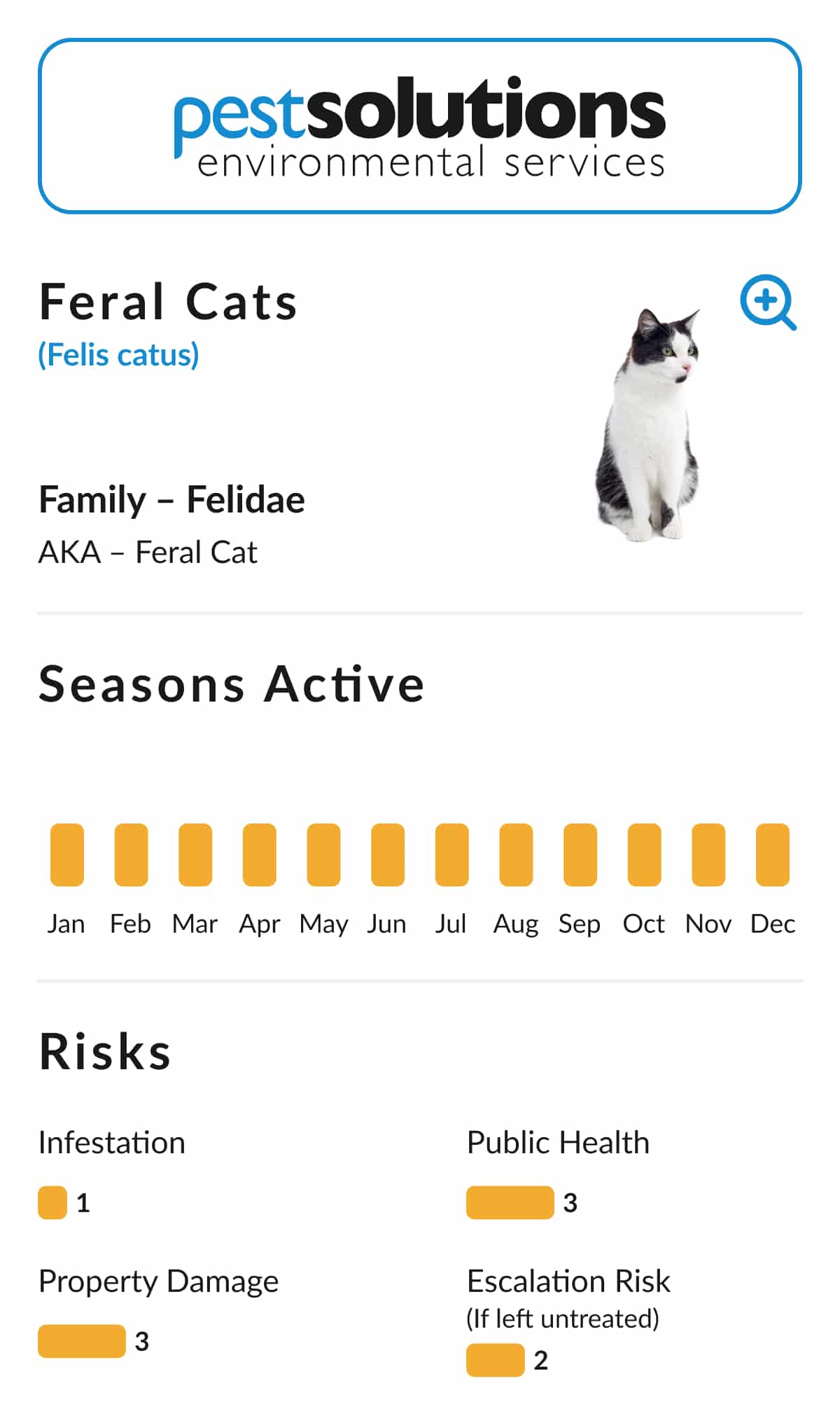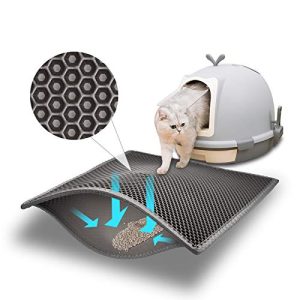Are you dealing with a stray cat that won’t leave your yard or porch? It can be frustrating when an unwanted visitor shows up and stays longer than you’d like.
But don’t worry—there are simple, effective ways you can encourage the cat to move on without causing harm. You’ll learn practical tips that work, so you can regain your space peacefully. Keep reading to discover how to make a stray cat leave, step by step.
Reasons Stray Cats Visit
Stray cats visit places for many reasons. Understanding why they come helps in managing their presence. These reasons often relate to survival and natural behavior. Knowing what attracts them can guide you in making them leave safely and respectfully.
Seeking Food And Shelter
Stray cats look for easy food sources. Garbage bins, pet food left outside, and small animals attract them. They also need safe places to rest and hide. Warm corners, sheds, and garages offer shelter from weather and danger. Food and shelter are basic needs that drive their visits.
Territory Marking
Cats mark areas to claim their territory. They use scent glands and scratching to leave signals. This behavior helps them avoid fights with other cats. Stray cats may visit your yard to mark it as their space. This can cause repeated visits and lingering presence.
Curiosity And Social Behavior
Cats are naturally curious animals. New smells, sounds, and sights attract their attention. Stray cats may come near to explore or find company. Some stray cats are social and seek interaction with humans or other animals. Their visits can be driven by interest or loneliness.

Credit: www.pestsolutions.co.uk
Assessing The Situation
Before you try to make a stray cat leave your property, it’s important to carefully assess the situation. Understanding the cat’s behavior, health, and the potential risks involved will help you decide the best course of action. Jumping to conclusions without proper evaluation can cause unnecessary stress for both you and the cat.
Identifying Stray Vs. Feral Cats
Not all cats found outdoors are the same. Stray cats are usually former pets who might approach humans and show signs of friendliness. Feral cats, on the other hand, tend to avoid people and act more wild.
Look for clues like collar presence, body language, and response to your voice. A cat that cautiously approaches or stays nearby might be stray, while one that hides or hisses is likely feral. How the cat reacts gives you a hint about its past and its willingness to be helped or removed.
Checking For Health Concerns
Watch for visible signs of illness or injury before taking any action. Cats with wounds, limping, or discharge from eyes and nose might need urgent help. Sometimes, stray cats carry diseases that could spread to other pets or people.
Consider contacting a local animal shelter or vet to report your findings. They can advise whether the cat needs immediate medical attention or quarantine. Do you feel confident handling a cat that may be sick, or is professional help a better choice?
Evaluating Safety Risks
Your safety and that of your family and pets should come first. Stray or feral cats might react unpredictably if they feel cornered or threatened. Scratches and bites can lead to infections, so think carefully before trying to approach or trap the cat yourself.
Assess the environment: Is the cat near busy roads, dangerous animals, or places where it could get trapped? Also, consider if the cat poses a threat to small children or other pets. What steps can you take to protect everyone involved while resolving the issue?
Deterring Stray Cats Humanely
Deterring stray cats humanely means creating an environment that gently encourages them to move on without causing harm. It’s about respect—understanding that these animals are seeking comfort, food, and safety just like you do. By making your space less inviting, you help both yourself and the cats find peace.
Removing Food Sources
Stray cats often stick around because they find easy meals near your home. Check if pet food, garbage bins, or compost piles are accessible. Secure trash cans with tight lids and avoid leaving food outside, even scraps.
Think about bird feeders or gardens where fallen seeds may attract rodents and cats. Cleaning these up reduces the indirect food supply. Have you noticed stray cats showing up more after you feed your outdoor pets?
Using Natural Repellents
Natural repellents can create an unpleasant environment for cats without hurting them. Scattering citrus peels or coffee grounds around your garden is a simple trick. Cats dislike strong smells like vinegar or lavender, so spraying diluted vinegar near entry points works well.
Planting cat-repellent herbs such as rue, rosemary, or lavender can also help. These plants add beauty while keeping cats away. Have you tried any natural scents that seemed to work in your yard?
Blocking Entry Points
Stray cats look for cozy hiding spots like under decks or porches. Inspect your property for gaps or holes and seal them with wire mesh or wood panels. Make sure your fences don’t have weak spots that invite sneaky visitors.
Consider installing motion-activated sprinklers or lights near common entry points. Sudden water or light surprises discourage cats without causing stress. Could a few simple repairs and devices be the key to reclaiming your space?

Credit: www.reddit.com
Safe Outdoor Deterrents
Safe outdoor deterrents keep stray cats away without causing harm. These methods respect animals and protect your garden or yard. They create an environment cats find uncomfortable, encouraging them to leave on their own.
Use tools that activate only when a cat approaches. This avoids disturbing other wildlife or neighbors. Choose deterrents that need little maintenance but work effectively over time.
Motion-activated Sprinklers
Motion-activated sprinklers sense movement and spray water briefly. Cats dislike sudden water sprays and usually avoid the area afterward. These sprinklers do not harm cats or other animals.
- Place sprinklers near entry points where cats often come.
- Adjust sensitivity to avoid false triggers from small animals.
- Use in gardens or yards to protect plants and spaces.
Ultrasonic Devices
Ultrasonic devices emit high-pitched sounds only cats can hear. The noise is unpleasant but safe and does not bother humans. Cats tend to leave areas with these devices active.
- Install devices facing spots where cats gather frequently.
- Check batteries regularly for consistent operation.
- Combine with other deterrents for better results.
Plant-based Barriers
Certain plants repel cats naturally due to their strong smell. Plant these around your garden to create a natural barrier. Cats dislike scents like rue, lavender, and pennyroyal.
- Choose plants safe for children and pets.
- Plant densely near fences and garden edges.
- Replace or trim plants to keep scents strong.
Managing Stray Cat Behavior
Managing stray cat behavior is important to keep your property safe and peaceful. Stray cats often come looking for food, shelter, or attention. Understanding their behavior helps you gently discourage them from staying around. Focus on actions that do not cause harm but reduce their comfort and interest in your yard.
Avoiding Direct Interaction
Do not feed stray cats or offer them water. Cats return to places where they find easy food. Avoid petting or calling them. This stops them from seeing your yard as safe and welcoming. Keep a calm distance and avoid loud noises that might provoke them.
Discouraging Shelter Creation
Remove any items that could become a shelter. Boxes, old furniture, or piles of wood invite cats to hide. Block access to sheds, garages, or under decks. Use fencing or barriers to close small openings. Make sure there is no dry, warm place for them to rest.
Maintaining Yard Cleanliness
Keep your yard clean and free of food scraps. Regularly pick up fallen fruit, pet food, or trash. Store garbage in sealed bins. Clean up any cat droppings quickly to avoid attracting more cats. Trim bushes and mow grass to reduce hiding spots.

Credit: www.reddit.com
When To Seek Professional Help
Stray cats can be tricky to handle alone. Some situations need experts to step in. Knowing when to get professional help keeps you and the cat safe. Professionals have the right tools and knowledge to manage stray cats properly.
Animal Control Services
Animal control officers help with stray animals causing problems. They can capture and relocate cats safely. They also check for signs of illness or injury. Calling animal control is best if the cat seems aggressive. They protect both people and animals in tough cases.
Local Rescue Organizations
Rescue groups focus on saving and caring for stray cats. They provide shelter, food, and medical care. These groups often find homes for cats. Contact a rescue if the cat looks lost or sick. They have resources to help cats long-term.
Trap-neuter-return (tnr) Programs
TNR programs control stray cat populations humanely. Cats are trapped, neutered or spayed, then released back. This stops more kittens from being born. TNR also improves cats’ health and behavior. Joining a TNR program helps communities and cats alike.
Frequently Asked Questions
How Can I Safely Deter A Stray Cat From My Yard?
Use natural deterrents like citrus peels, coffee grounds, or commercial cat repellents. Avoid harming the cat and keep your area clean.
What Are The Best Ways To Discourage Stray Cats From Returning?
Remove food sources, secure trash bins, and use motion-activated sprinklers. These methods make your property less inviting to stray cats.
Is It Harmful To Scare A Stray Cat Away?
Avoid aggressive actions. Gentle deterrents prevent harm and stress. Scaring a cat can cause unpredictable behavior and injury risks.
Should I Contact Animal Control For Stray Cat Problems?
Yes, if the stray cat appears injured, aggressive, or sick. Animal control can safely manage and rehome the animal.
Conclusion
Helping stray cats leave peacefully takes understanding and patience. Respect their space and needs. Provide alternatives like food at a distance. Secure your property to prevent entry. Humanely discourage them using safe methods. Remember, kindness goes a long way. Cats seek safety and comfort.
By making your environment less inviting, they might move on. Consider contacting local animal services if needed. They can offer assistance and advice. Ultimately, balancing compassion with practicality ensures a peaceful solution. Always prioritize the well-being of both the cat and your community.





